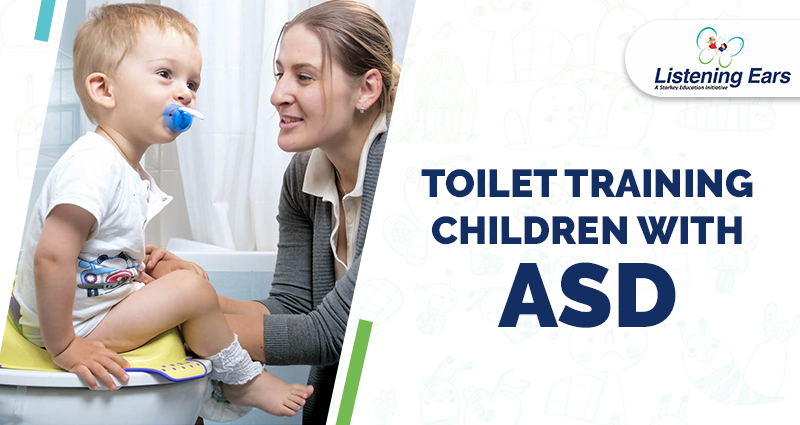Toilet Training Children With ASD

Causes of Attention Deficit in Children and Ways to Overcome it
November 13, 2019
Managing Your Child’s Diet Requires Patience and Understanding
December 20, 2019Toilet training can be challenging for children with autism spectrum disorders(ASD). There are many reasons why it can take a long time. Many children with ASD learn to use the toilet at a late age. Most children with ASD learn to urinate and have bowel movements in the toilet later than other children (Tsai, Stewart, & August, 1981)
Here some ideas about factors to consider with toileting:
- Physical: A pediatrician can inform you about physical or medical causes that could lead to toileting issues.
- Language: As communication and comprehension is an issue with these children, they might not be able to convey they have to go.
- Sensory issues: tactile defensiveness and other such sensory issues might pose a problem
- Dressing: Sensory issues and the technicality of donning and doffing clothes before and after toilet time might pose as a problem
- Fears: Sitting on high toilet seats, the sounds of the flush or the faucet might be scary to the child. Getting children used to the toilet is very important.
- Body Cues: Some children might not even register the wetness and may not be aware of the state of their clothes
- Need for sameness: Since a change in routine is difficult for a child to adjust to, changing toileting habits might prove to be a challenge
- Using different toilets: Children who are used to certain settings find it difficult to generalize and learn to use toilets at other settings (other than, home and school)
How to start:
- Start initially by making a note of the diet and the water intake of the child. These affect toileting and bowel movements.
- Then a schedule where the time between water intake and when the child urinates, should be noted. Then a schedule should be drawn up corresponding to the findings.
- Initially six toilet sits can be scheduled. These must be planned around the usual routine. Changes must be minimal.
- Next would be teaching the child to know the difference between wet and dry.
- Teach the child the process, use flash cards, show videos and then follow with a practical demonstration of how to go to the toilet. Include steps and follow these steps consistently with every visit.
- Communication is a vital part of ensuring the success of this process. Establishing a means of communication, either by using a visual chart, hand gestures, or specific words to indicate the need to go to the toilet will be helpful. These child specific methods must be used at all settings, school, home or outdoors
- Identify a reward that the child will look forward to after successful toilet trips. Only use this reward in relation to toileting practices. Do not use it to reward any other behavior. Inform the teacher, therapist, whoever might be involved in this process that the reward must be given with successful completion of a toilet trip without fail.
- According to the planned schedule, take the child to the toilet, follow all steps in that order. Wait for the decided amount of time, then only let the child leave. (For eg: making the child sit on the toilet seat for 5 mins, every 1.5 hours whether or not he/she urinates. Potty trips require a longer sit down, so making the child sit for about 10 mins is required)
- Give the child a reward after successful toilet trips. Rewards along with social praise is more effective.
- Repeat the same process till the child is toilet trained
Some important pointers for toilet trainers to remember when training commences:
- Eliminating the use of diapers when training commences is absolutely necessary.
- In case of unavoidable circumstances, using a diaper over the underwear is recommended so that the child feels the wetness when he/she urinates.
- If accidents occur, it important to not tell the child off. Do not forget to appreciate and praise when accidents do not occur.
- It is very important to involve the child in the cleanup process in case of accidents. Disposing the diapers, tissues and washing hands.
- Use a visual chart in the toilet and point to the picture as you engage in each step




